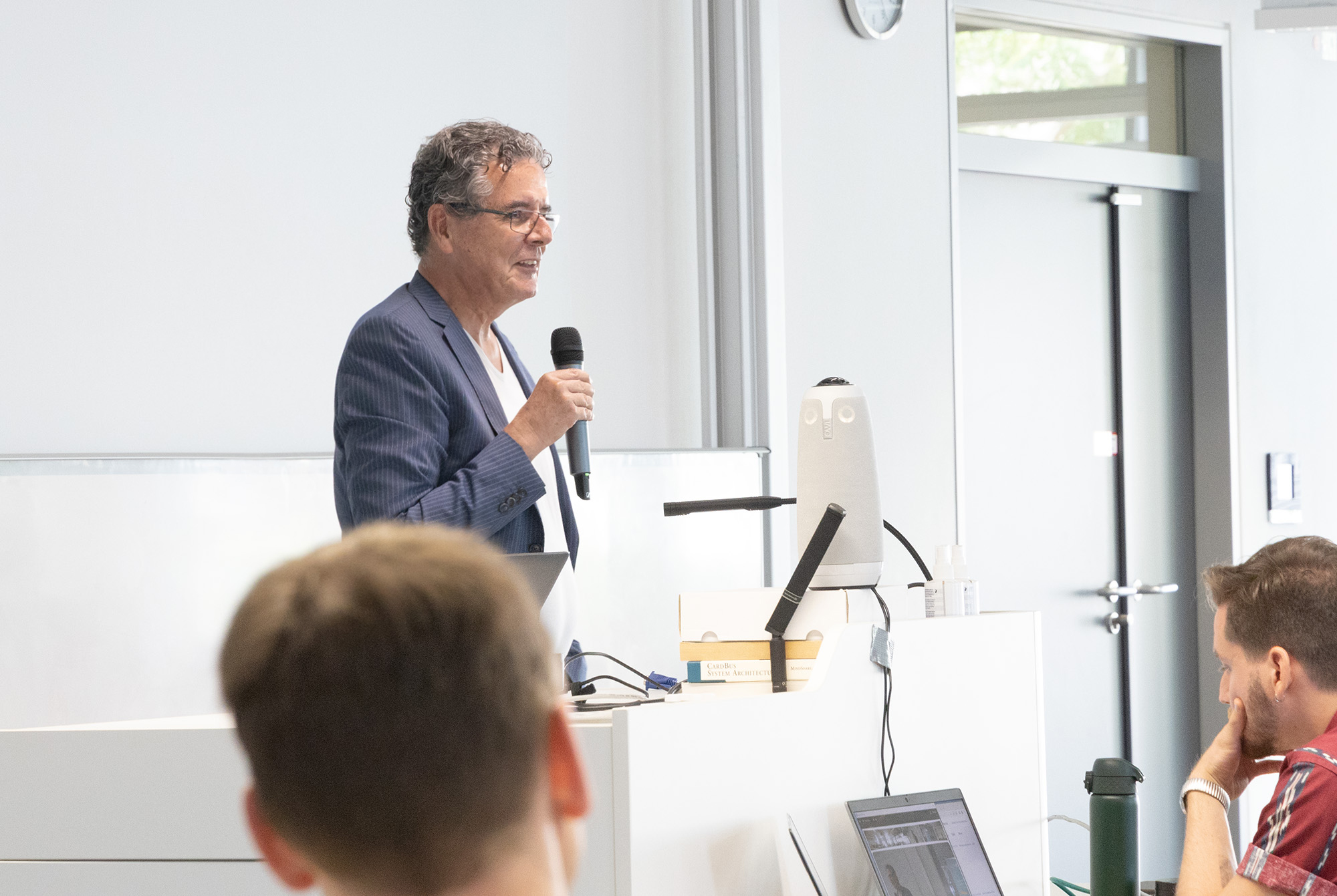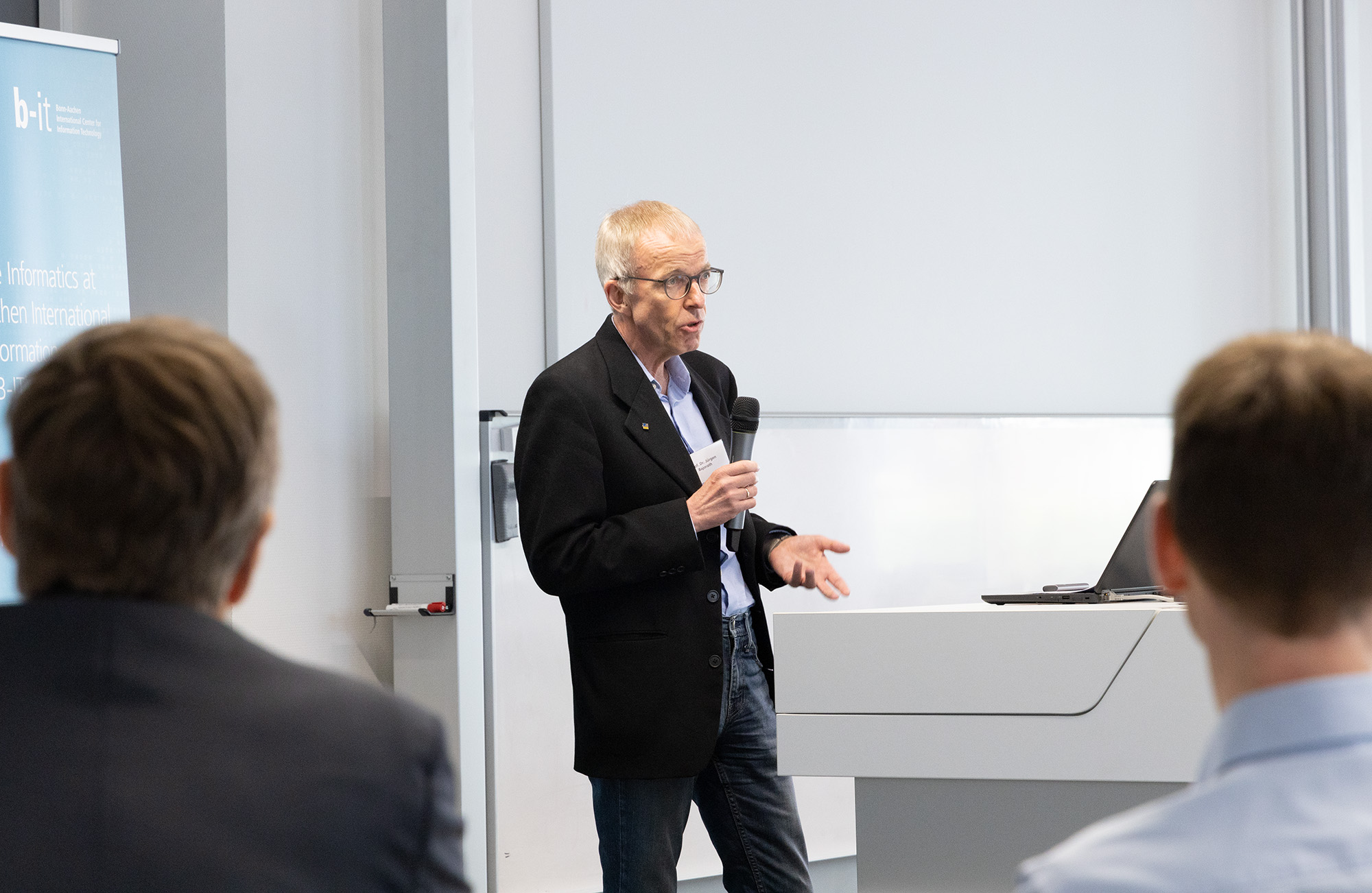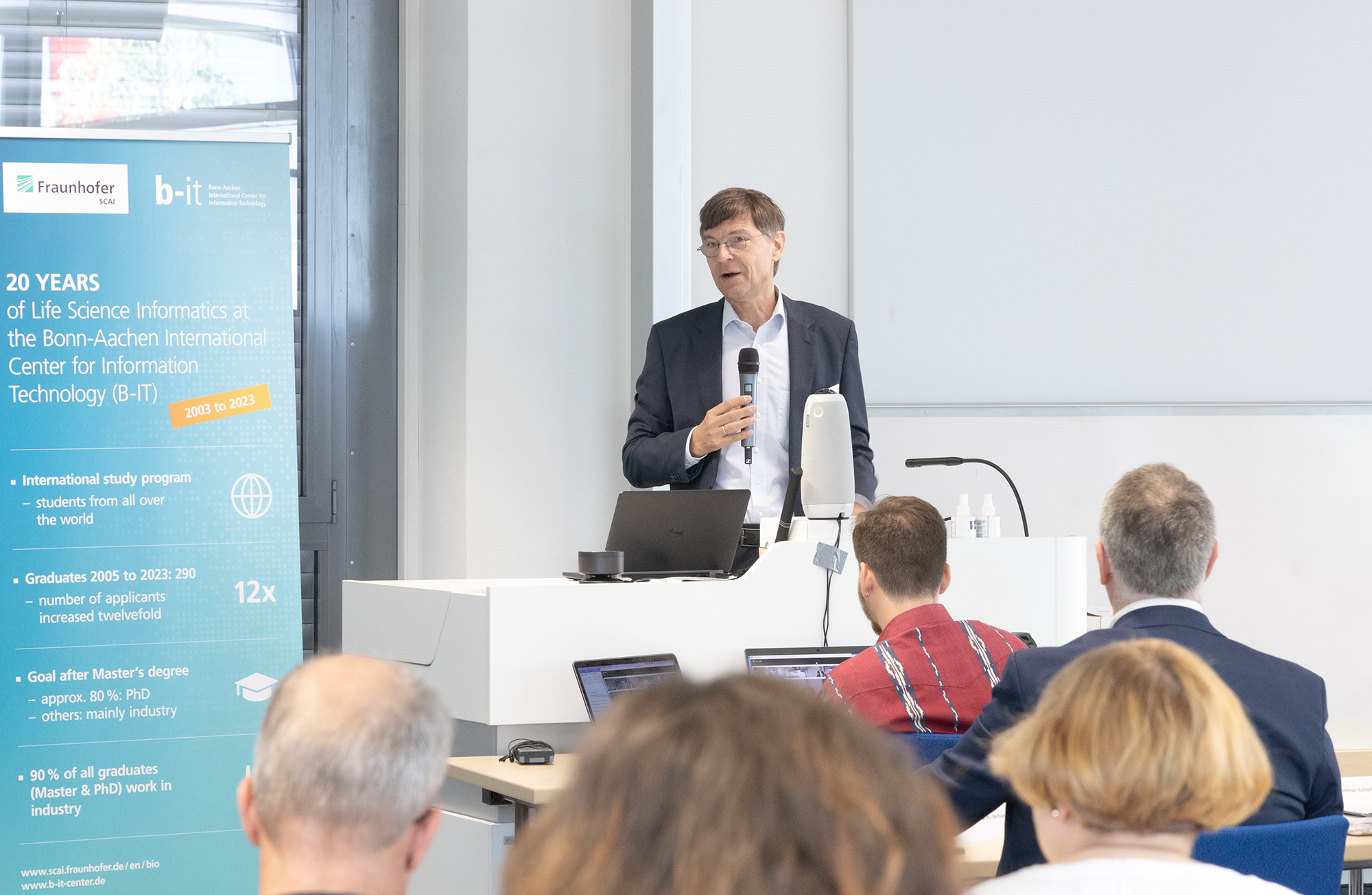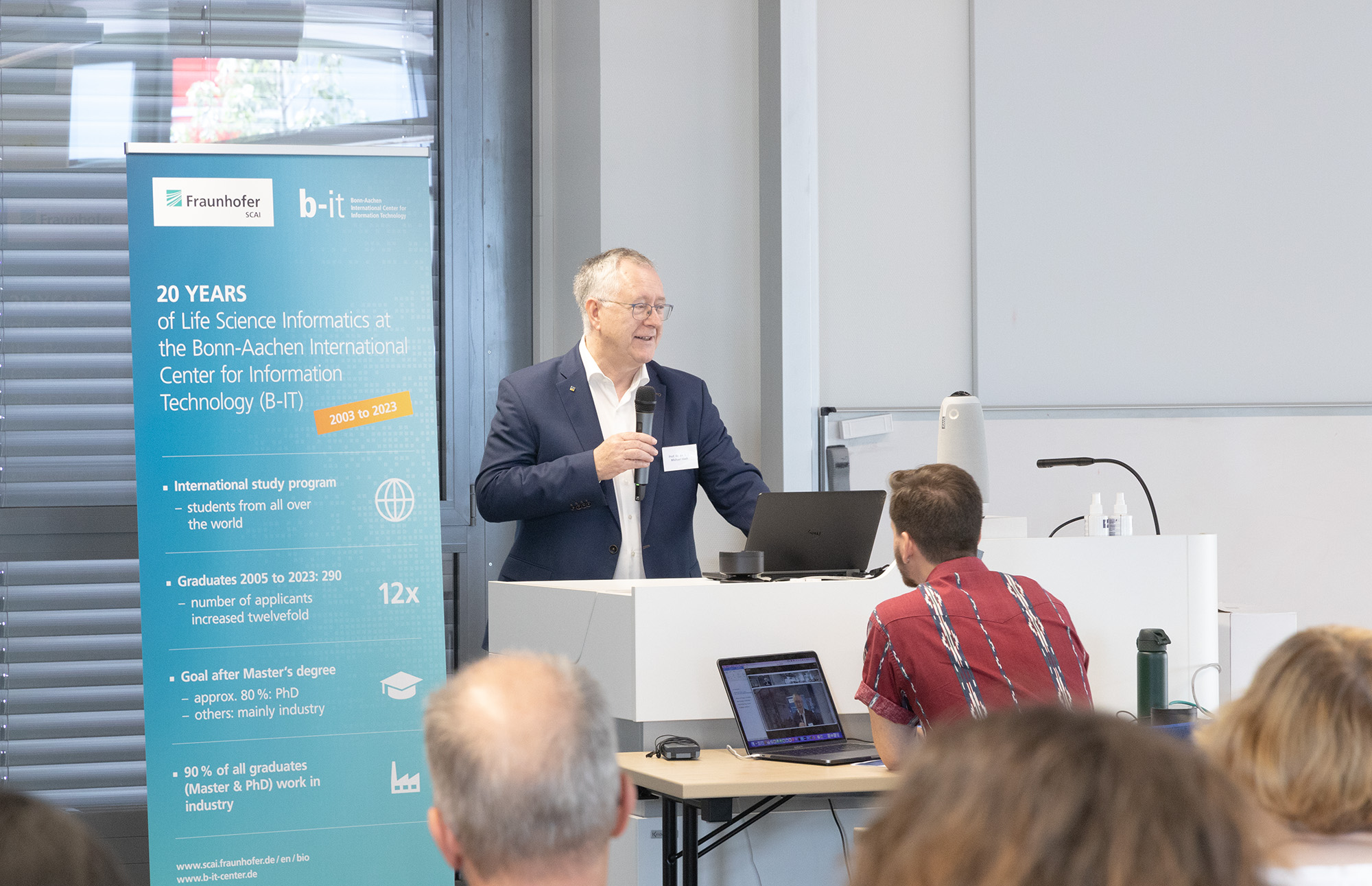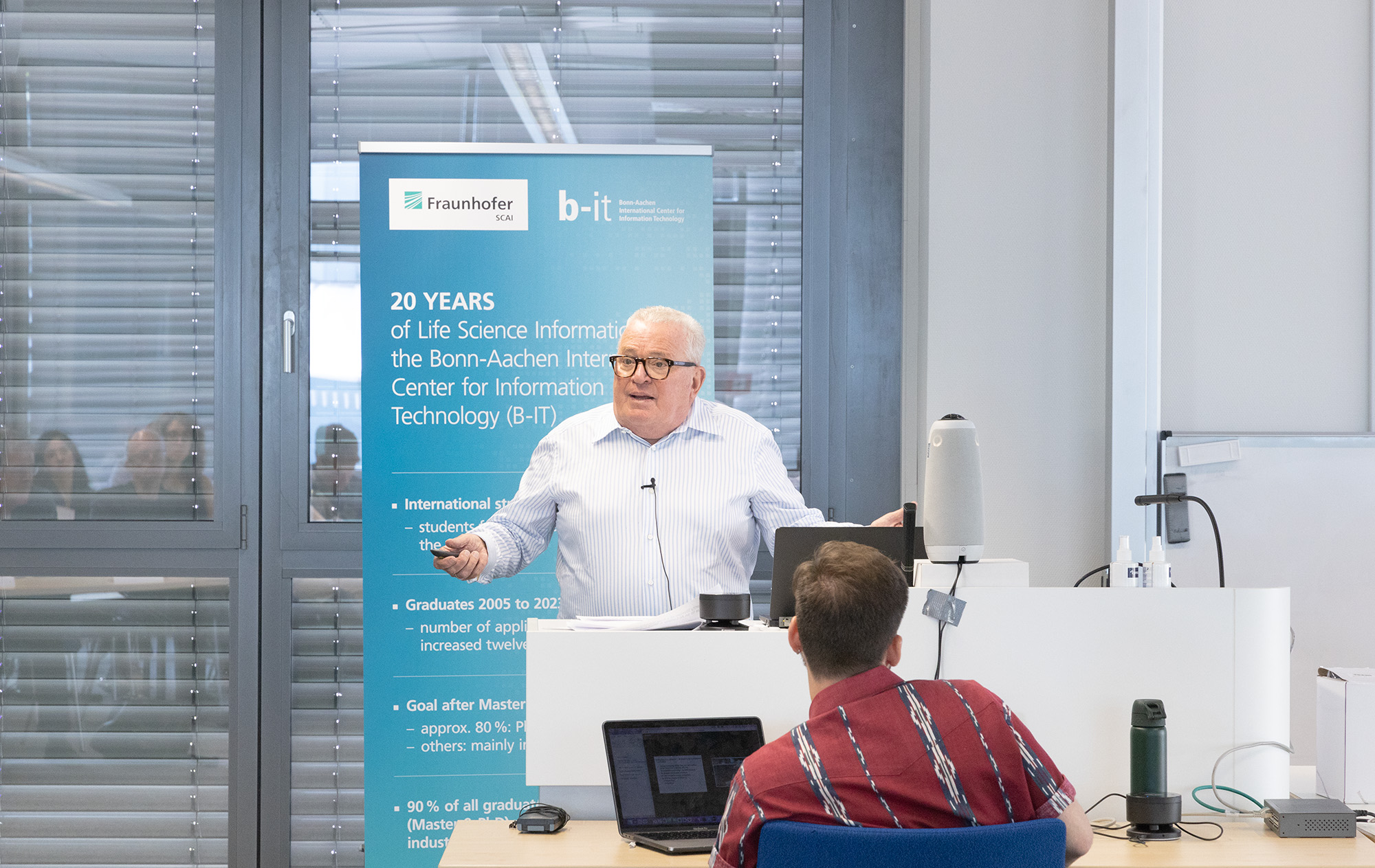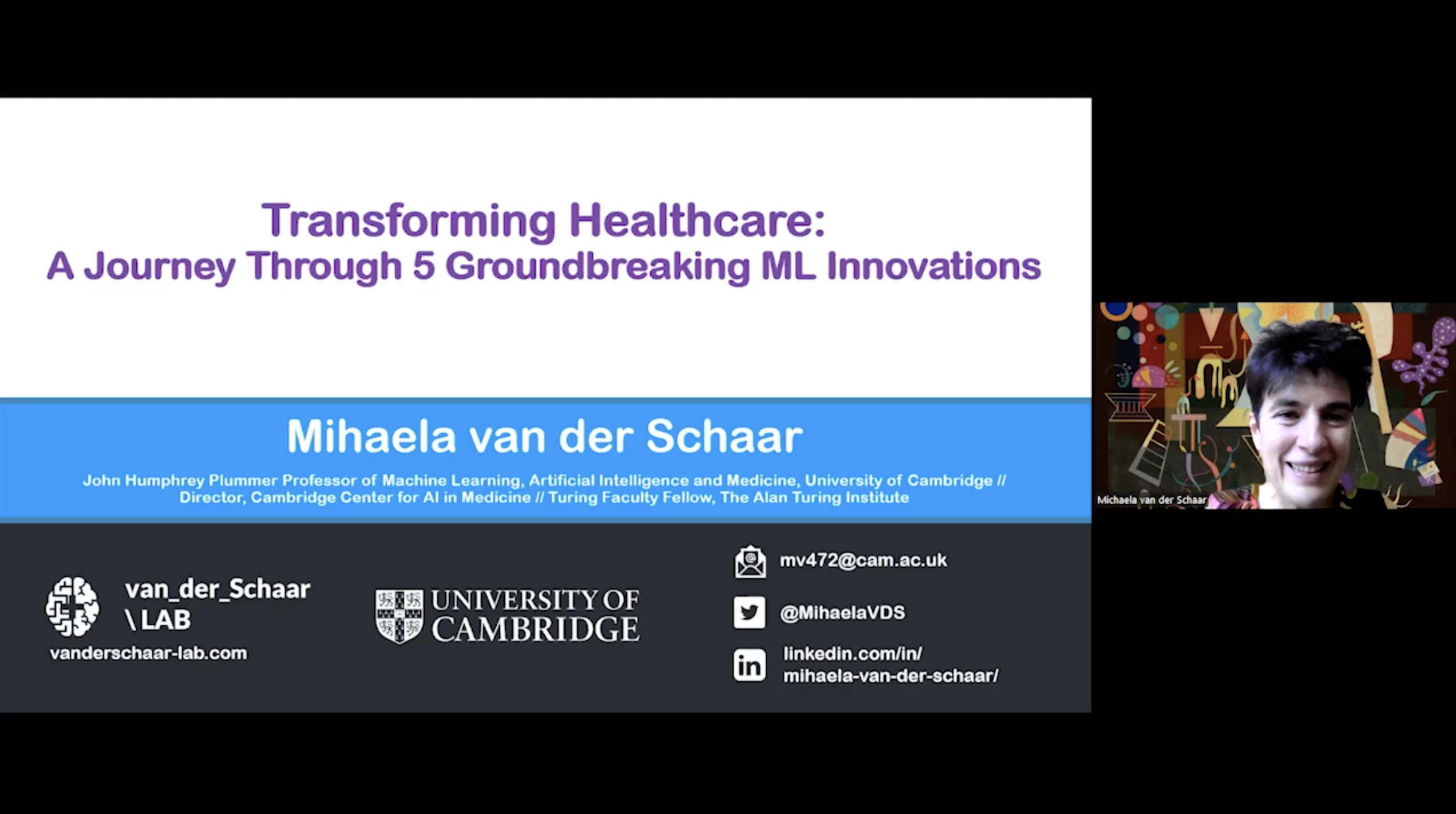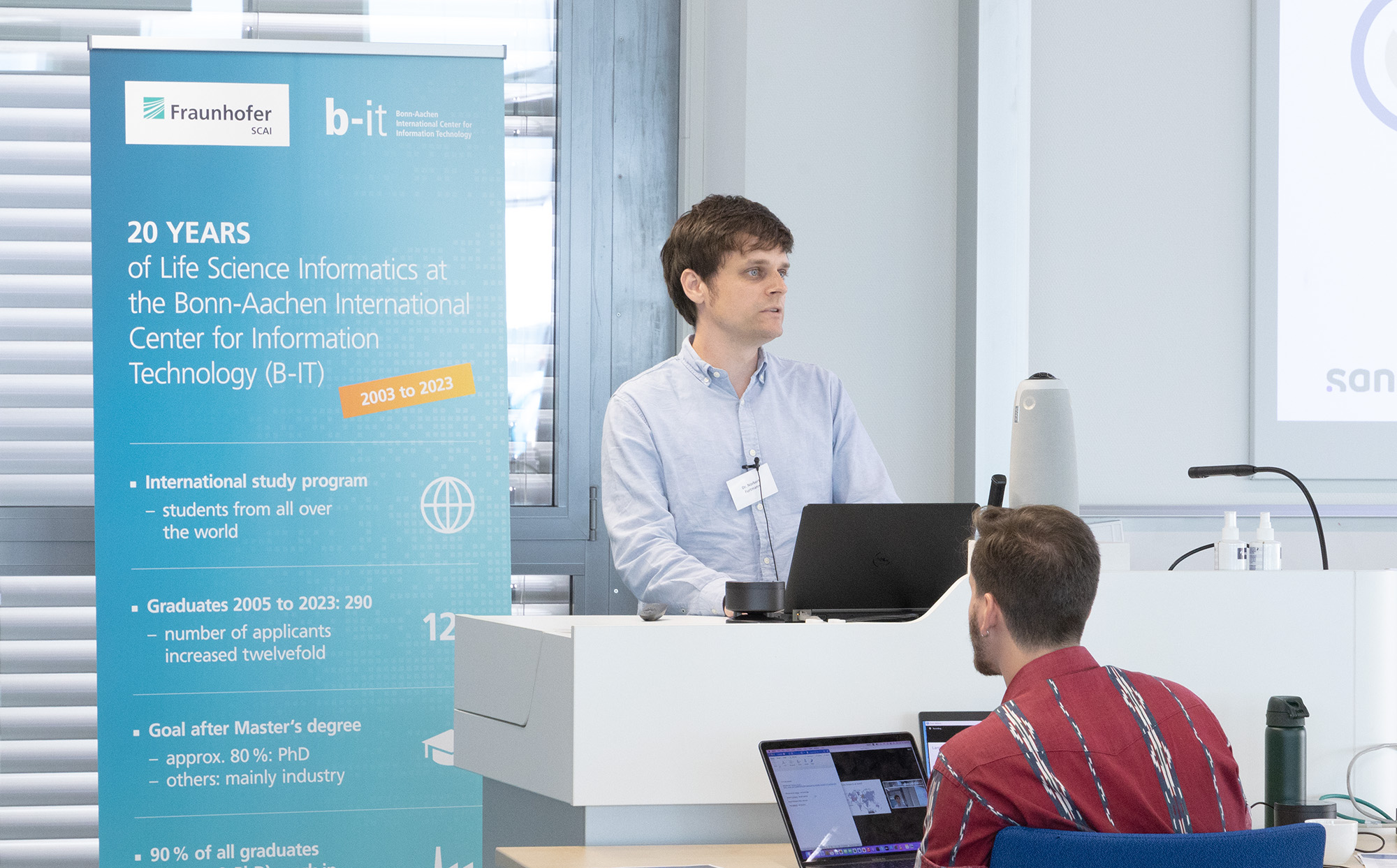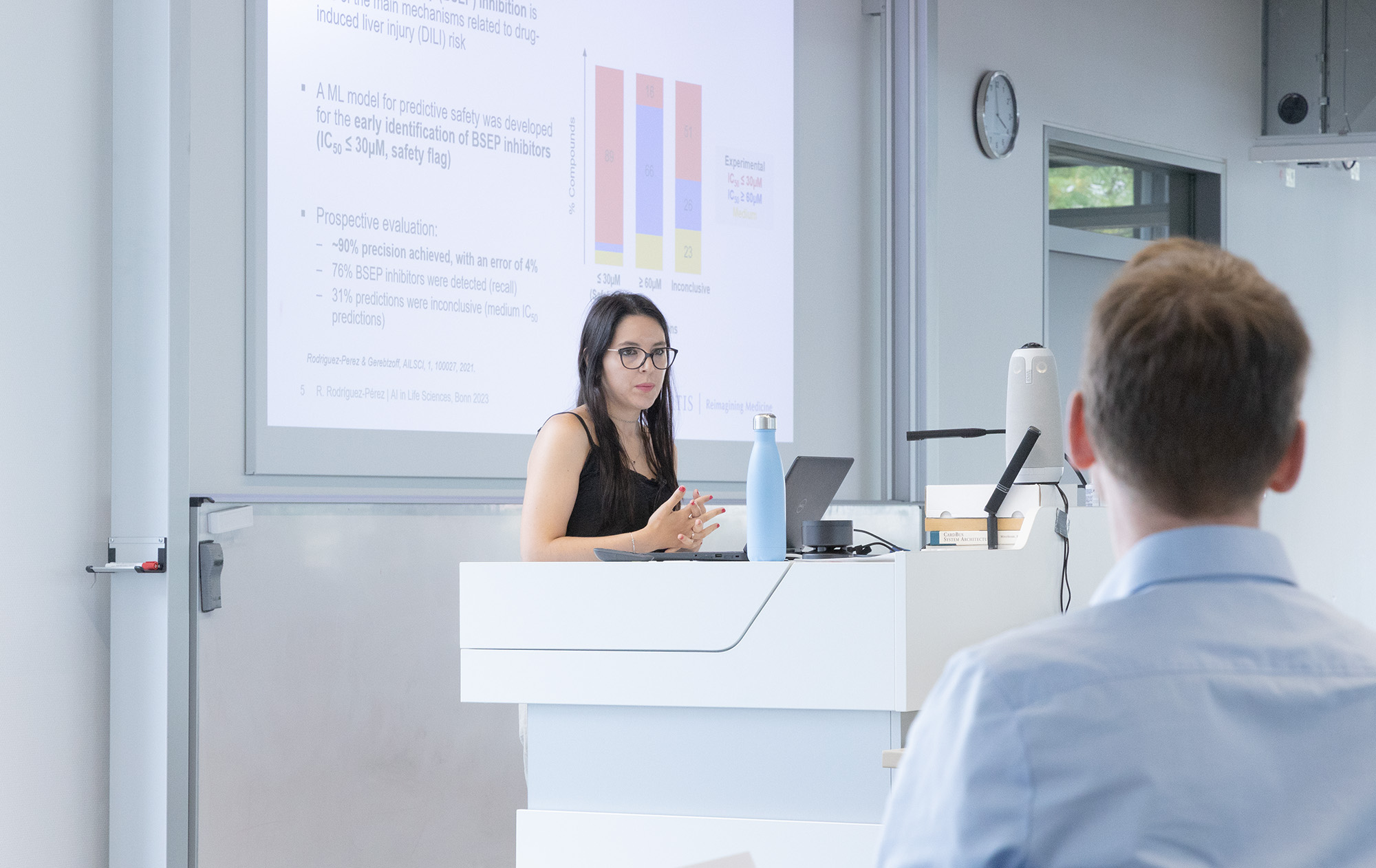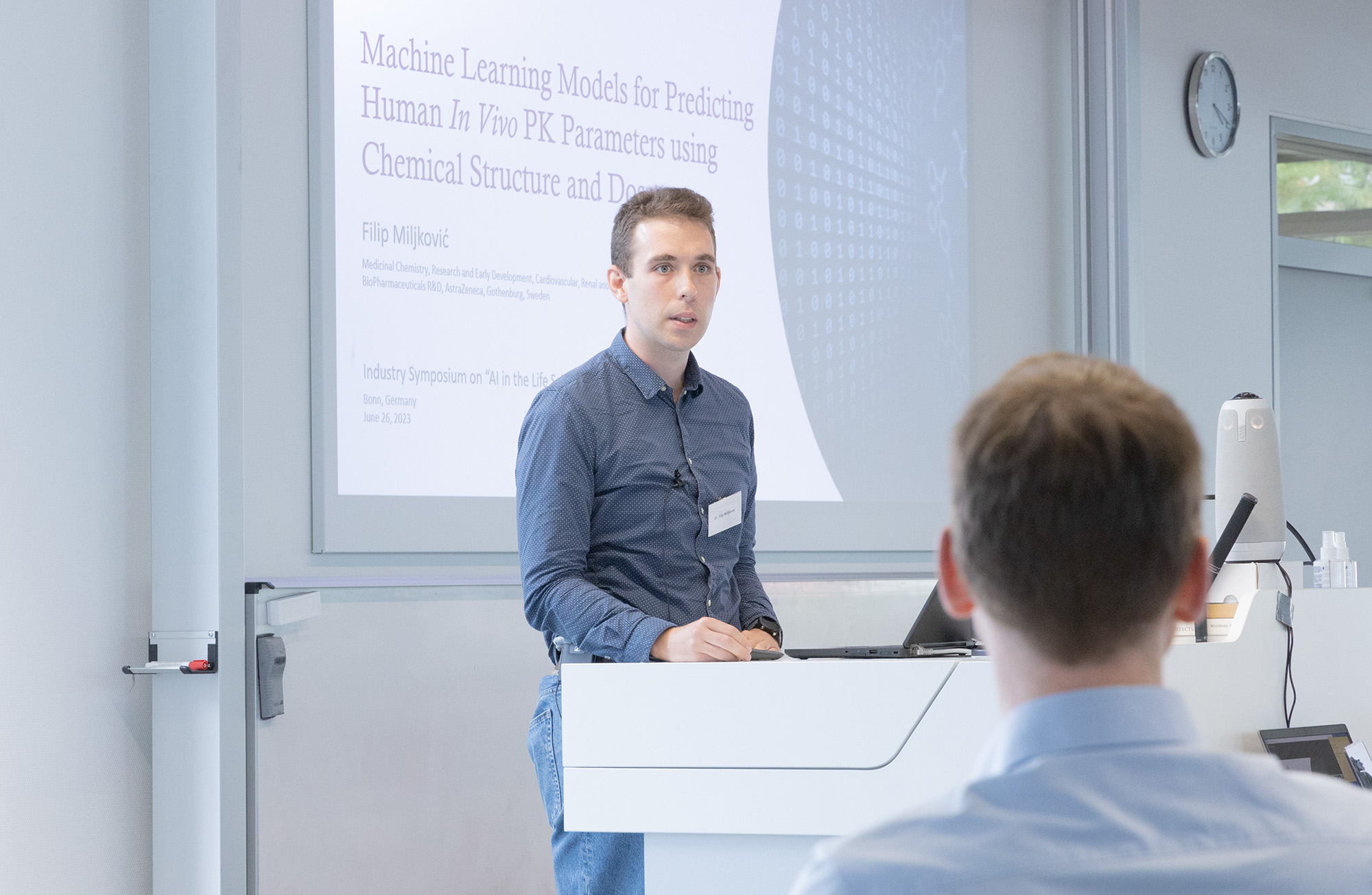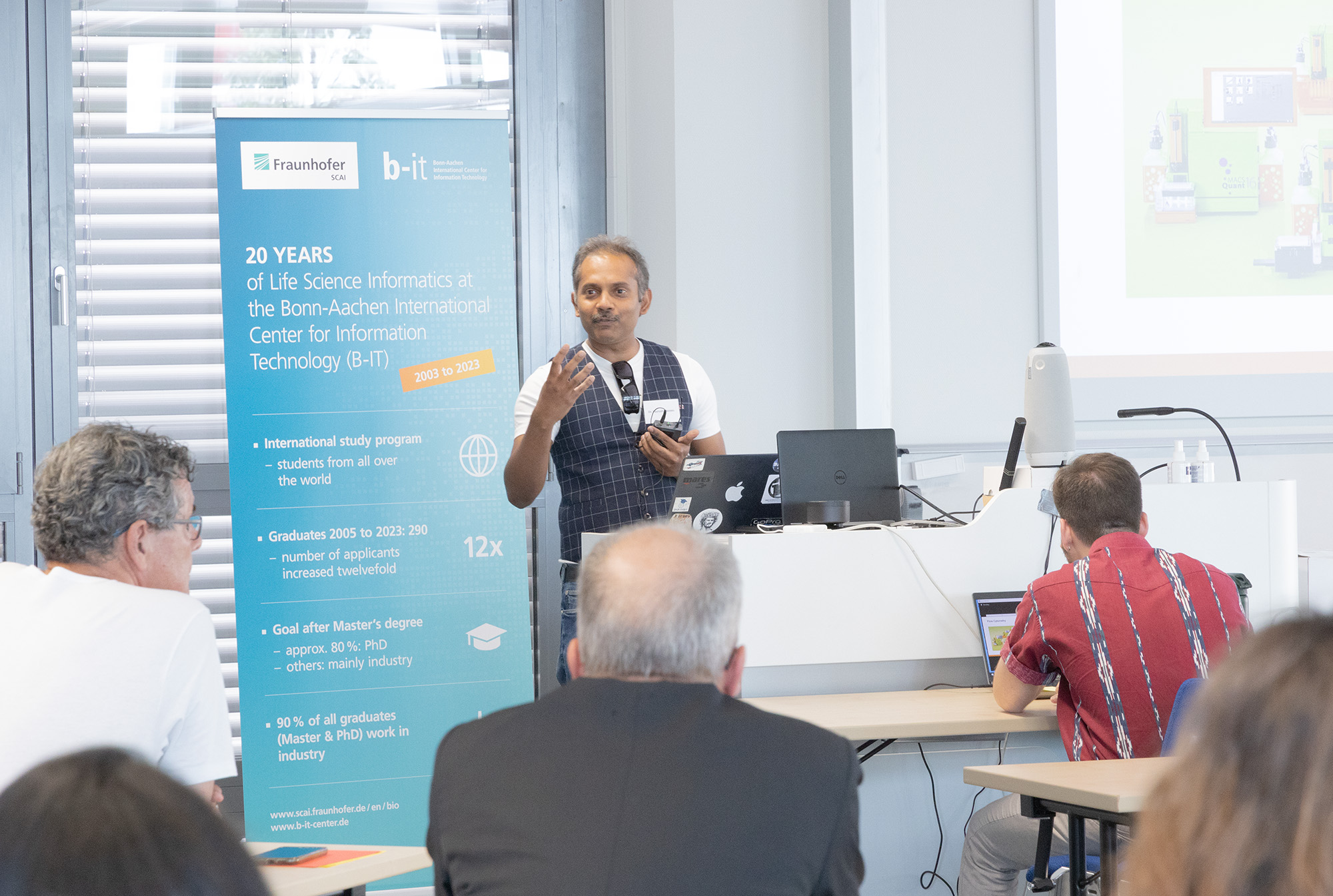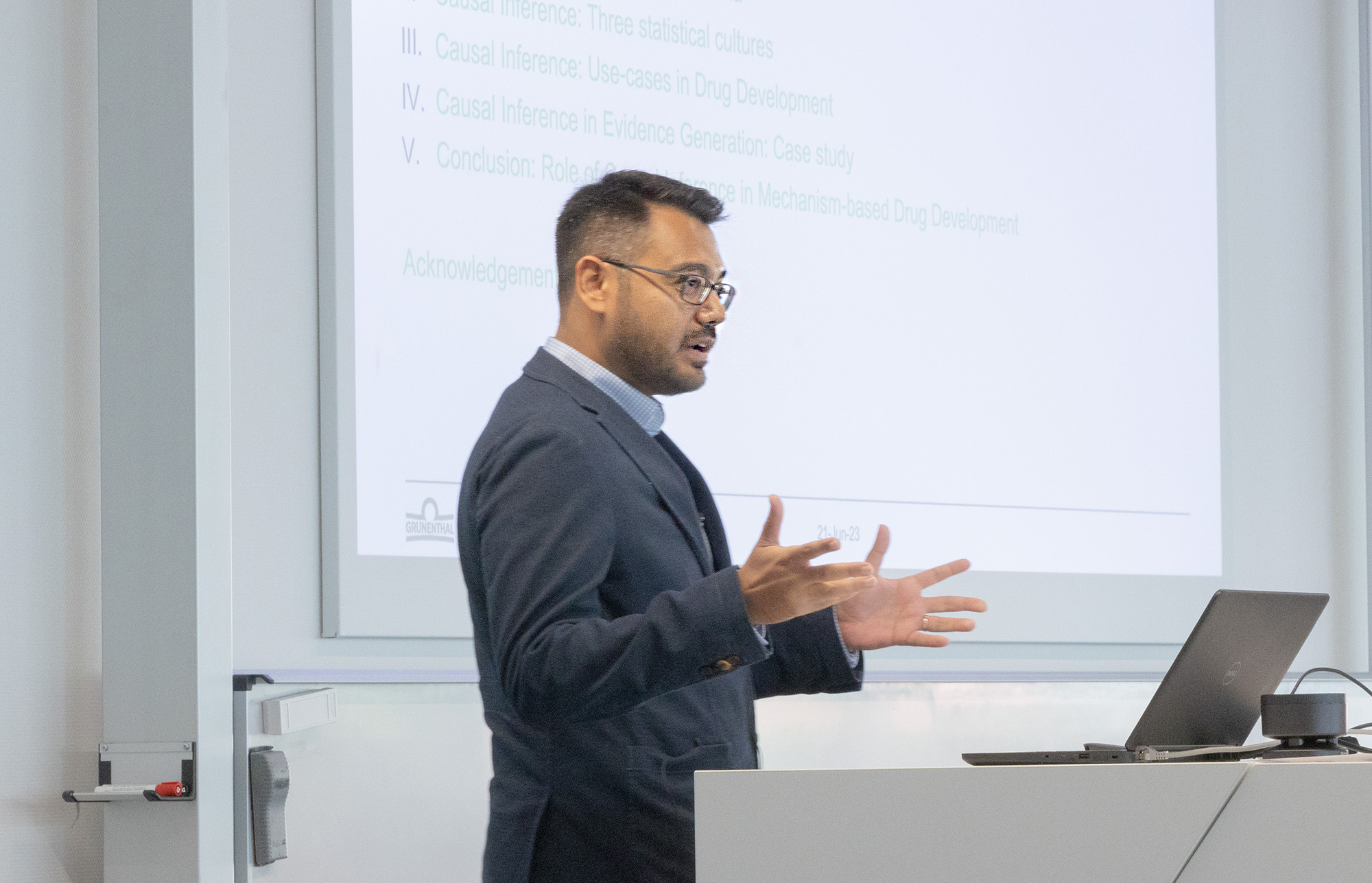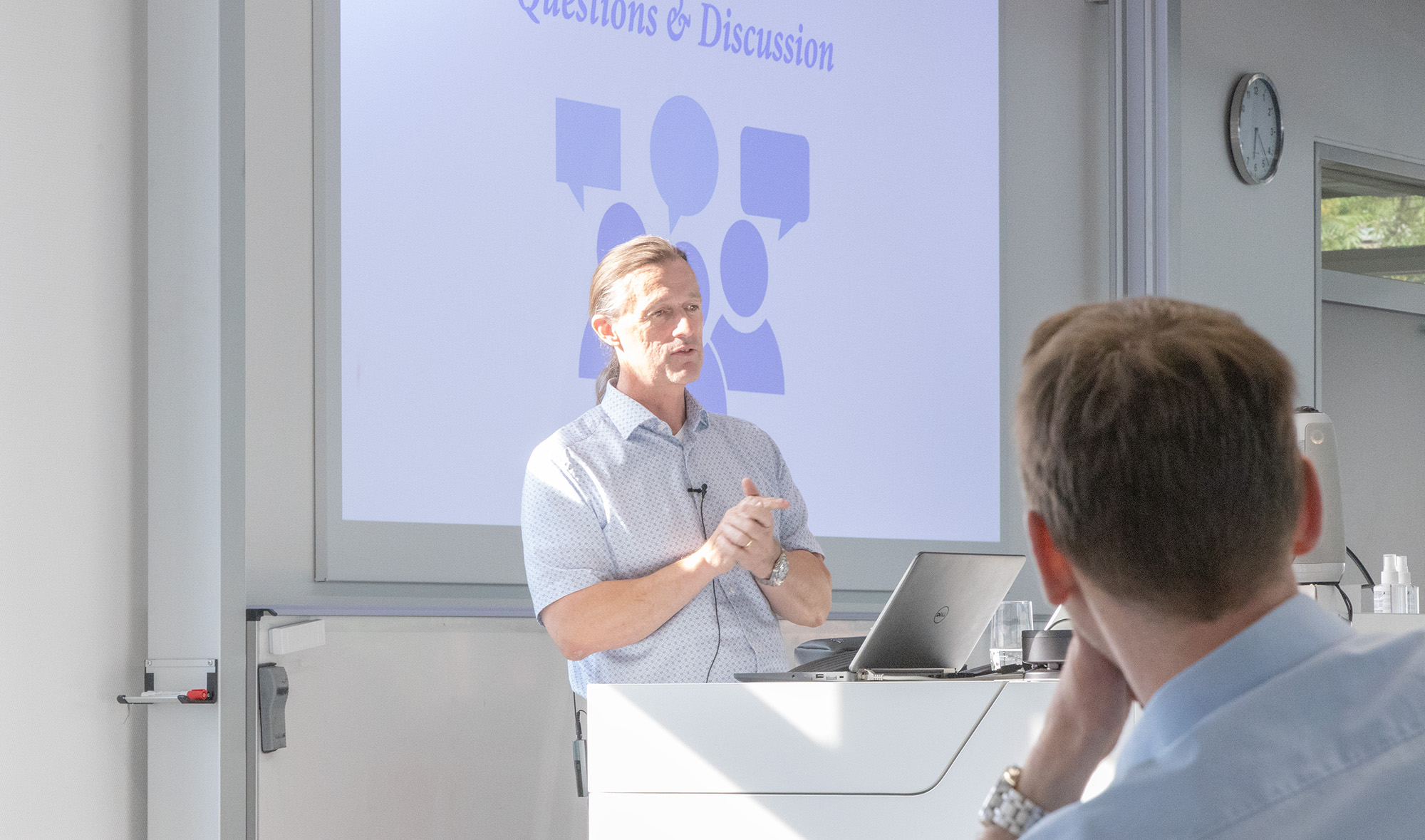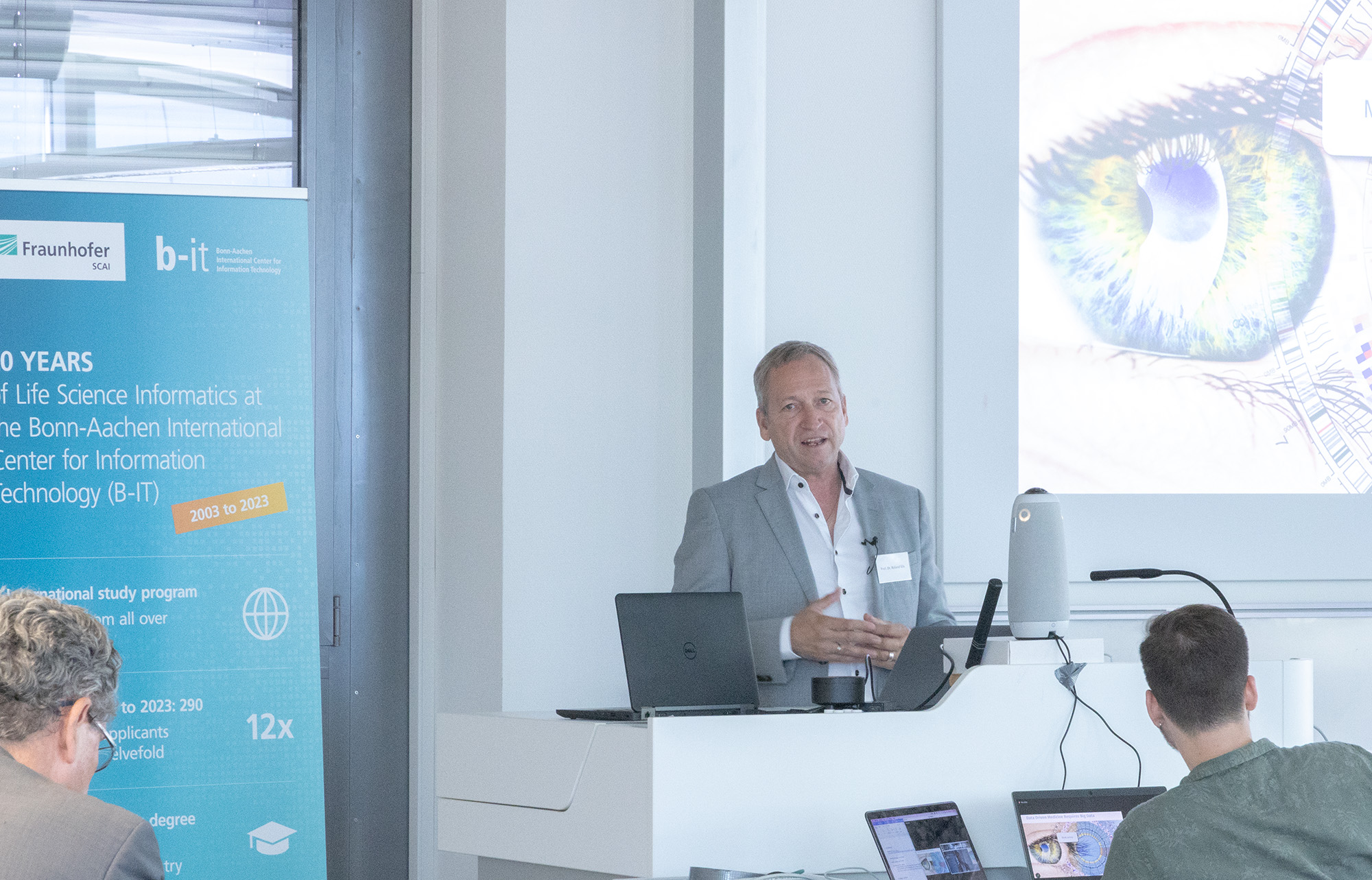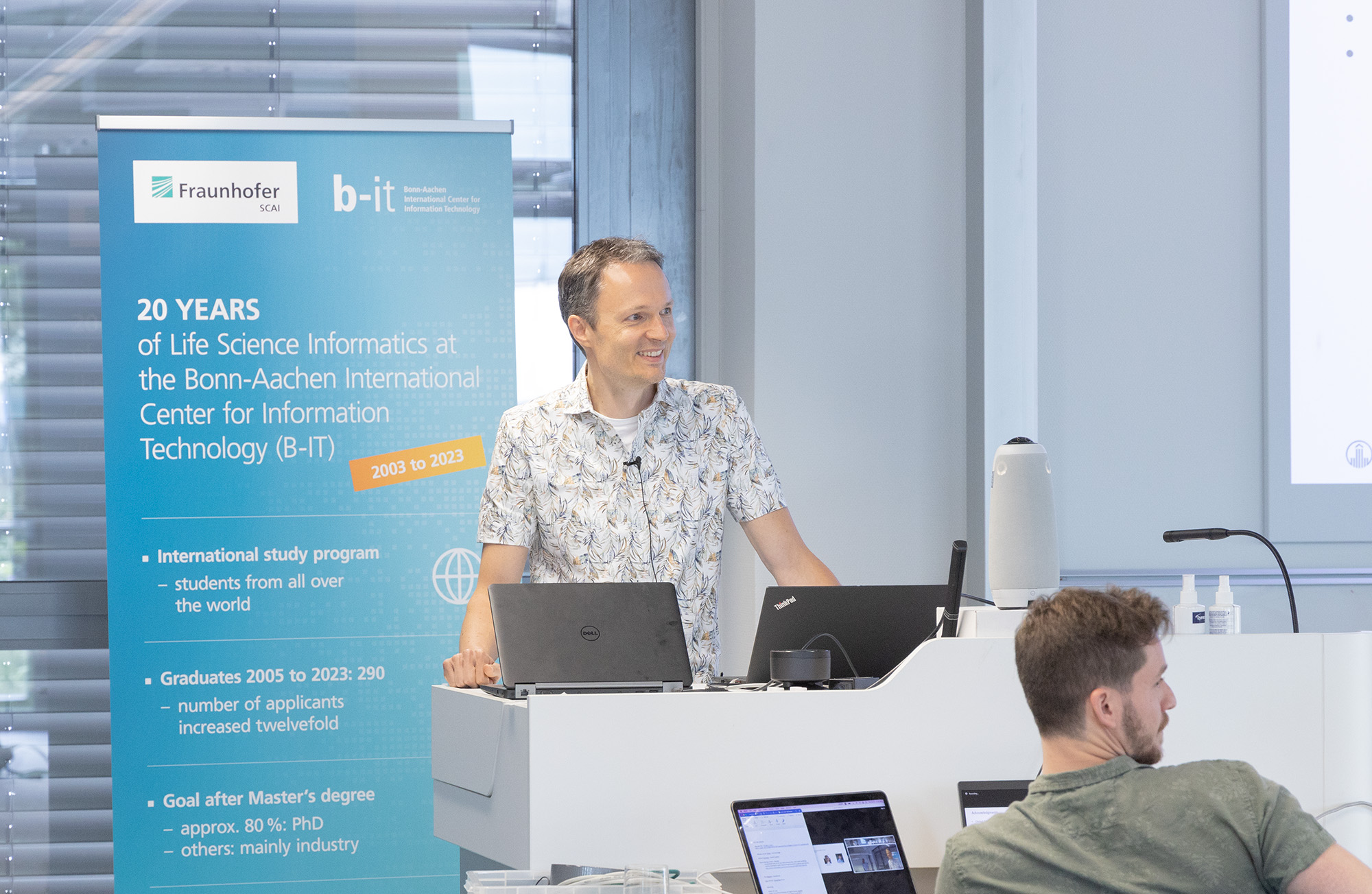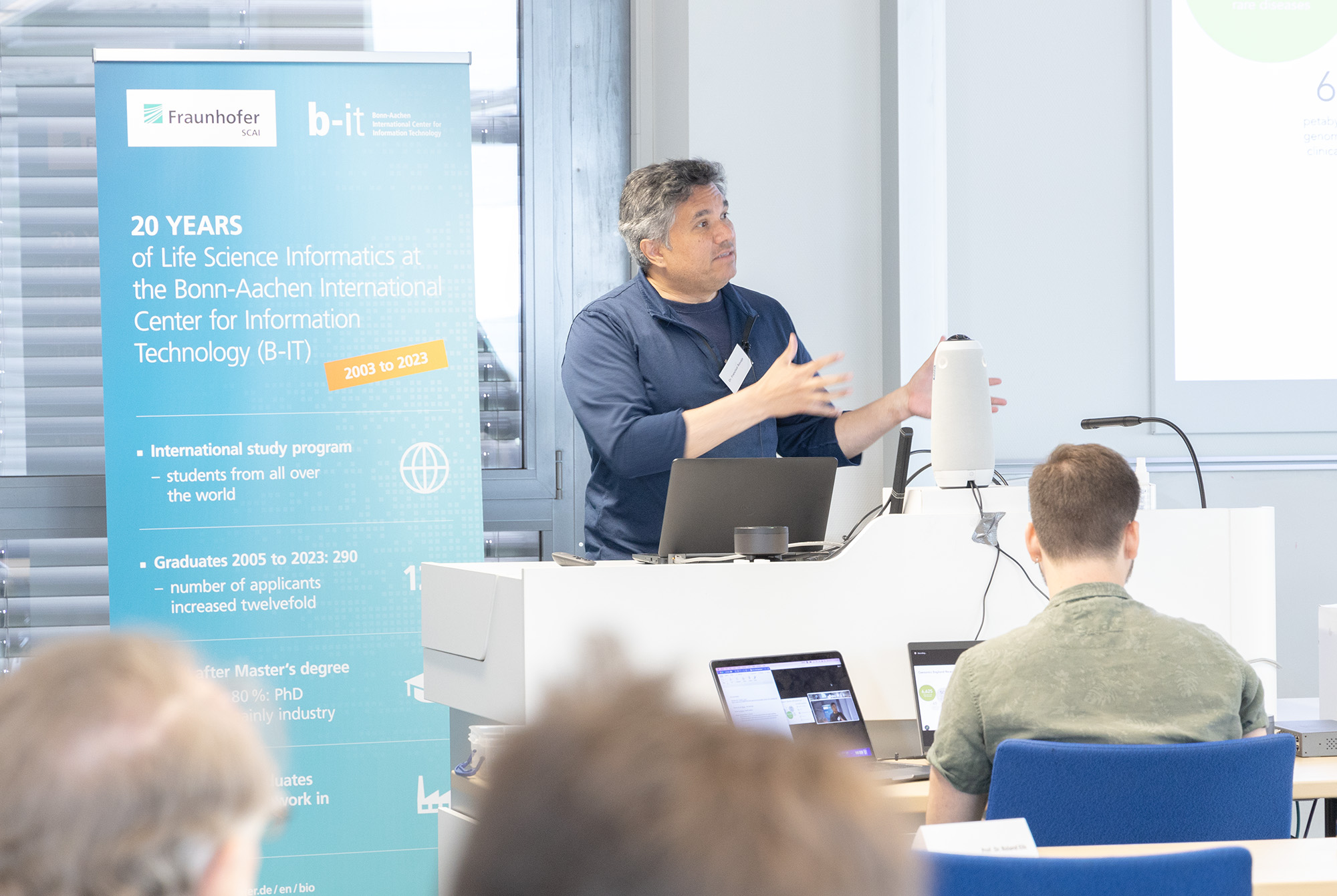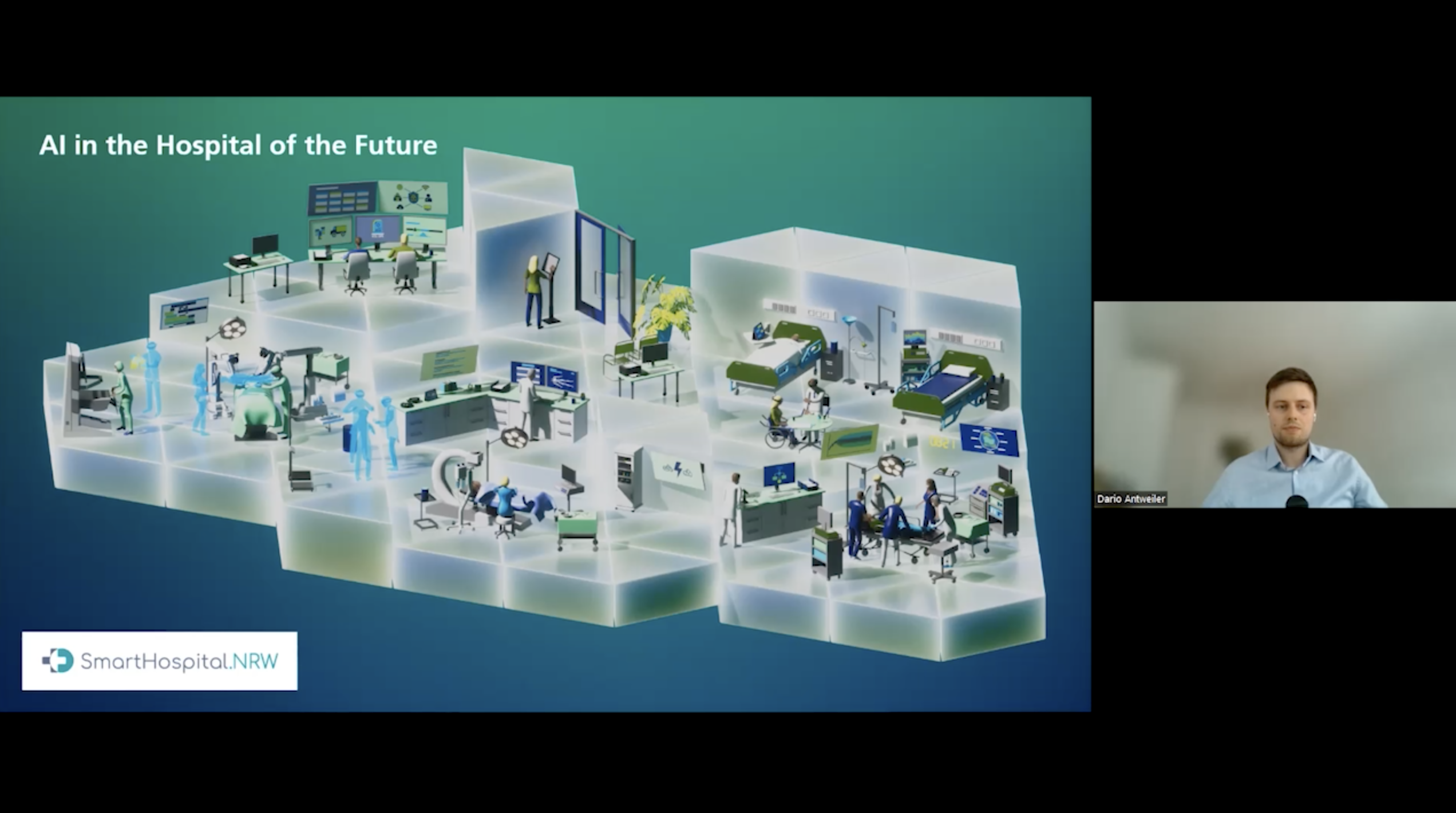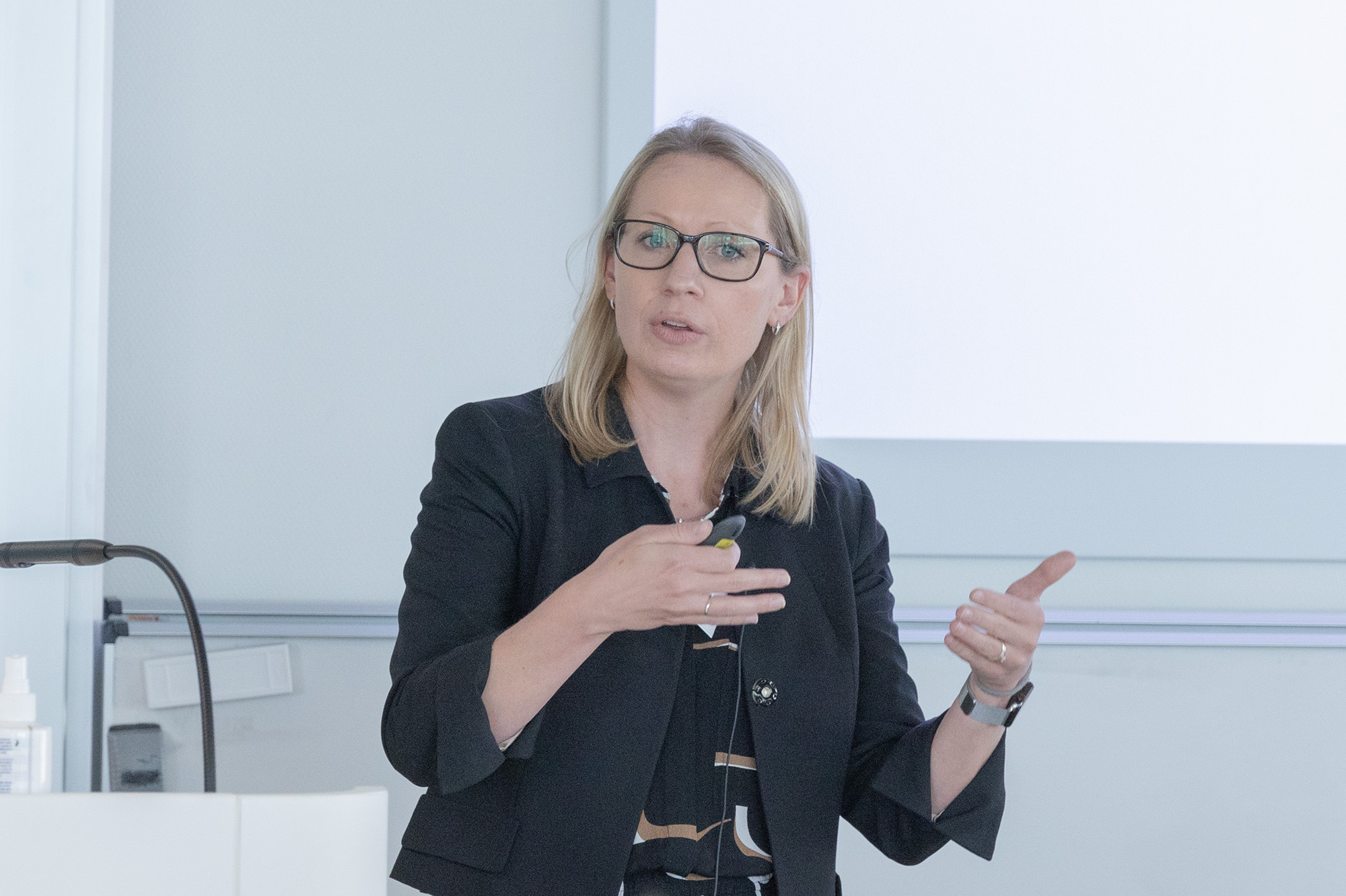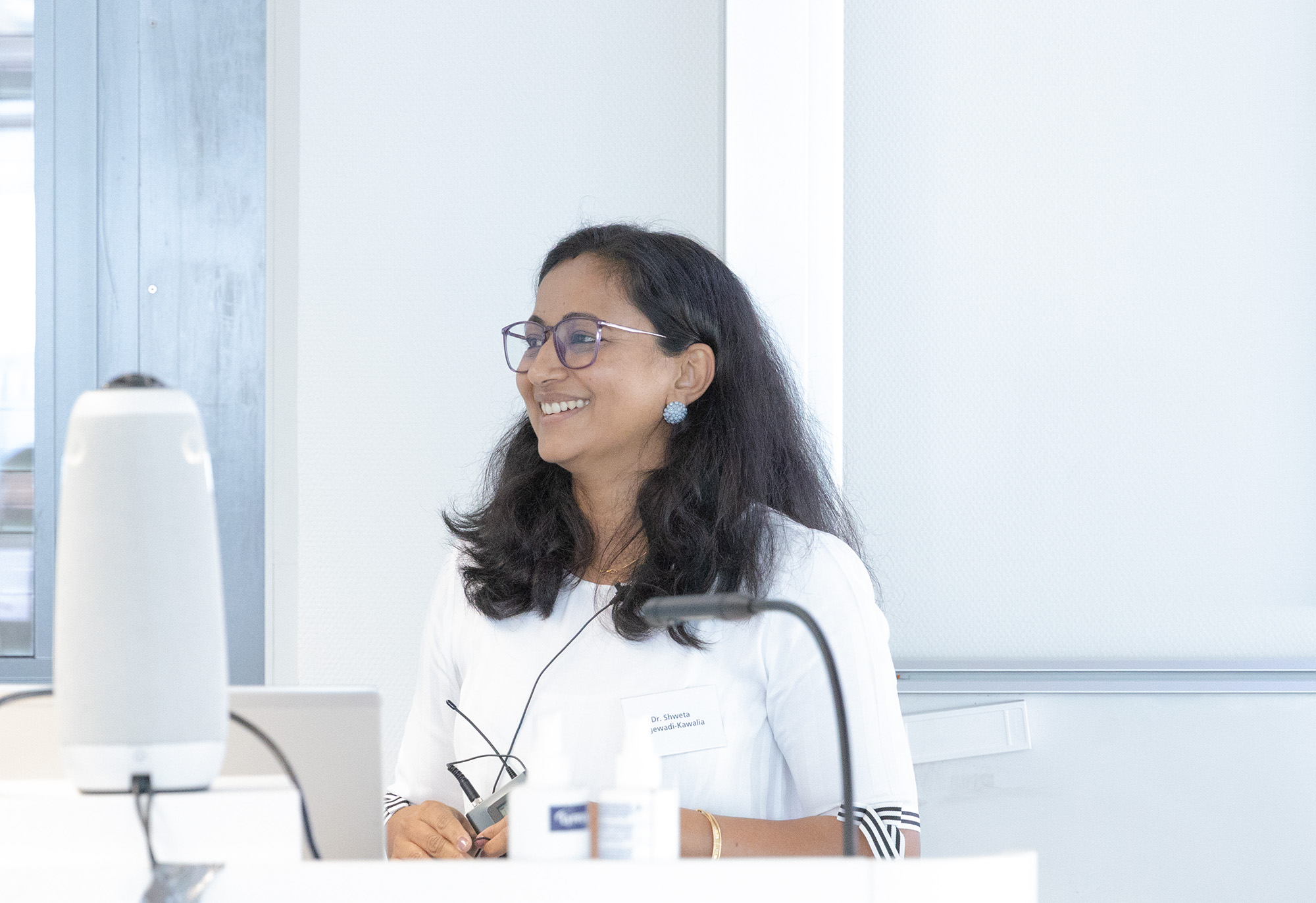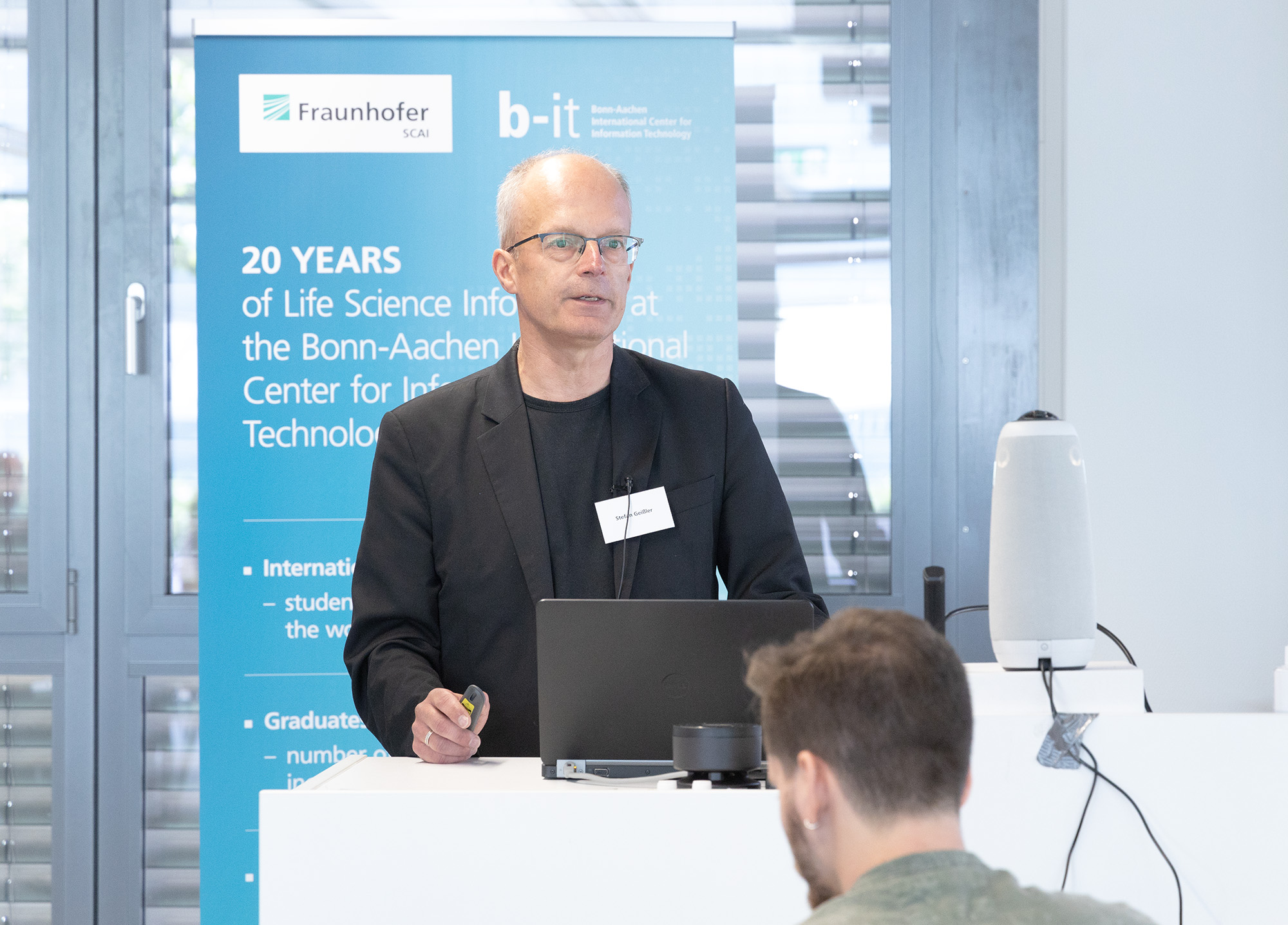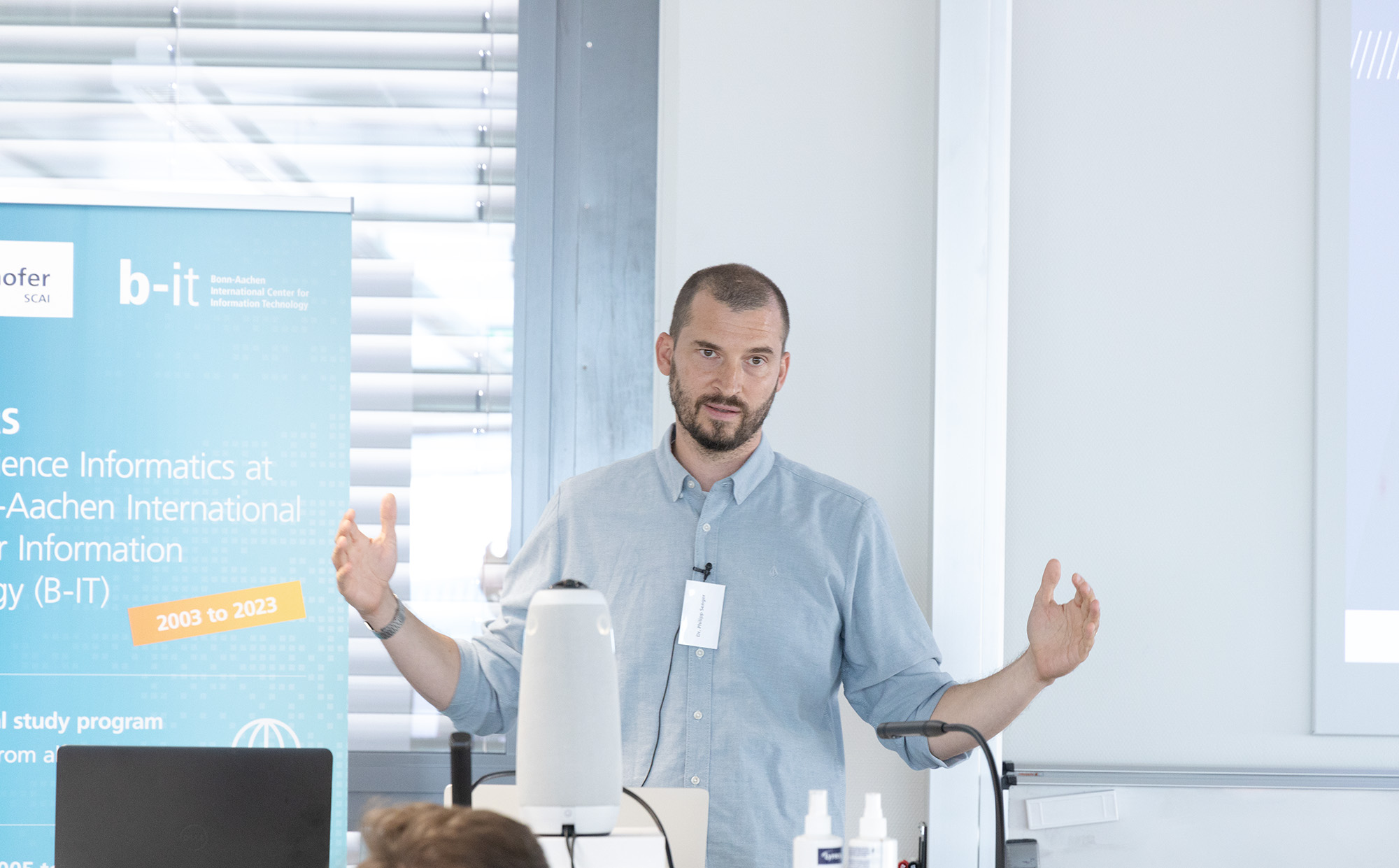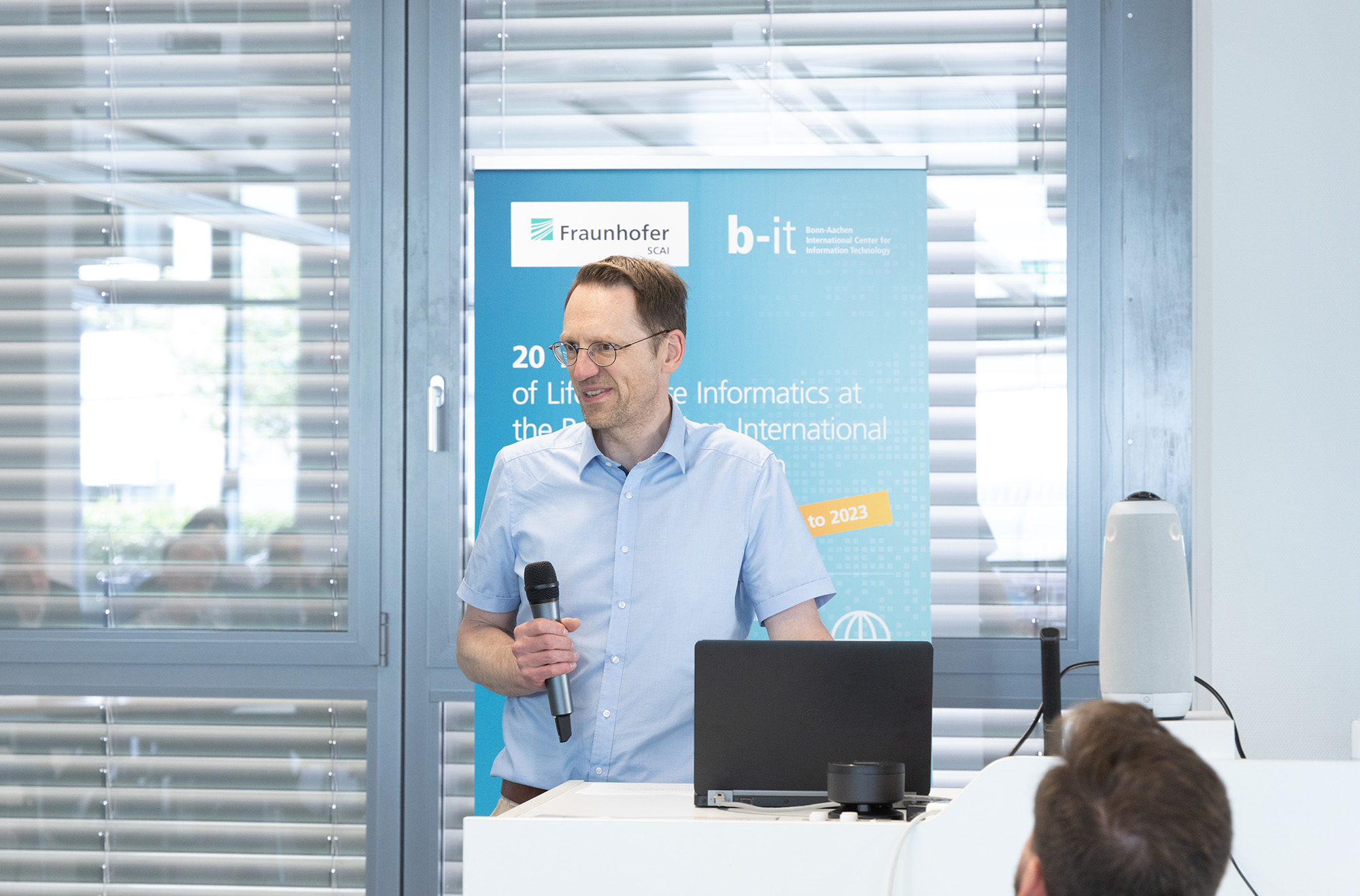Artificial intelligence is a game-changer for life sciences research and patient care
For two days, international experts in artificial intelligence in the life sciences discussed at the industry symposium "AI in the Life Sciences." They had traveled to Bonn at the invitation of Martin Hofmann-Apitius and Holger Fröhlich, both professors at the Bonn-Aachen International Center for Information Technology (b-it) and heads of the Bioinformatics department at Fraunhofer SCAI. Nevertheless, it was not a scientific conference like any other: The symposium featured a balance of presentations by internationally well-known experts from academia and industry. This led to an exciting exchange about current research results in academia and R&D projects in the pharmaceutical industry. The participants very well received this unique conference format.
At the start of the symposium, Thomas Sattelberger, Former Parliamentary State Secretary from the German Federal Ministry of Education and Research, made it clear that he was no friend of excessive regulation in artificial intelligence. "I stand for experimentation and light-touch regulation," Sattelberger said. Sattelberger opposed the planned AI regulation by the European Parliament and the EU. He firmly believed this would weaken Europe and Germany's innovative power.
Mihaela van der Schaar of the Cambridge Centre for AI in Medicine at the University of Cambridge suggested that "all problems in medicine should be considered time-series problems." One goal of her research is to develop time-series models that can estimate the frequency of occurrence of an event, taking into account competing risks. In this way, predicting the probability of patients' conditions deteriorating during treatment is possible. For example, she has developed machine learning algorithms to estimate the progression of prostate cancer during active surveillance.
The last speaker of the first day, Bryn Roberts' talked about AI in healthcare. He emphasized that it includes: “detection” (e.g., digital biomarkers), “prediction” (risk models and prediction of clinical path), and “interaction,” if recommender systems and ChatBots take care of first-level healthcare support. But one of the main issues is the need for trust in medical AI. He predicted, "AI won't replace physicians, but physicians who use AI will replace those who don't. "
Intense discussions arose after Roland Eils' presentation on "Data save lives – deep learning from health data." Eils, founding director of the Center for Digital Health at the Berlin Institute of Health at Charité, showed how artificial intelligence could predict the course of diseases. For example, analyzing medical records and laboratory values can help generate fairly accurate percentages of whether one will develop certain disease conditions. Of course, such statements also have ethical implications, of which Eils is very aware. However, he expressed his belief, "If I could get a reliable statement that my behavior could reduce my risk of cardiovascular disease by 30 percent: I would change it."
Anna Bauer-Mehring reflected on the future empowerment of pharma research and development through AI. Her topics ranged from chemical spaces constructed and mined by AI via AI-driven optimization of therapeutic antibodies to the replacement of animal studies through in-silico models for ADME (Absorption, Distribution, Metabolism, and excretion) and Toxicity. Finally, she talked about using real-world data, e.g., from social media, to better understand patients' responses to drug treatment.
